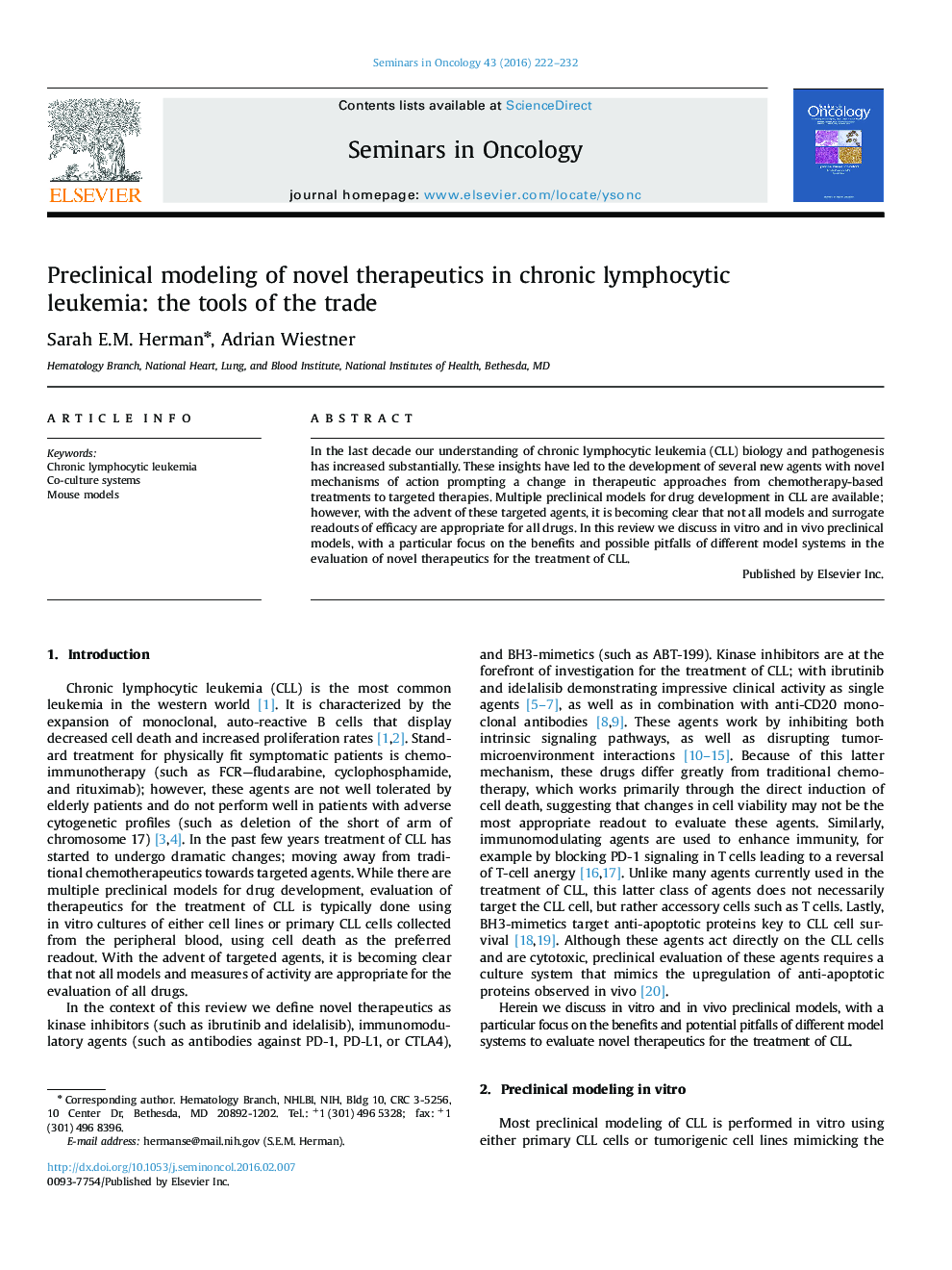| Article ID | Journal | Published Year | Pages | File Type |
|---|---|---|---|---|
| 2161746 | Seminars in Oncology | 2016 | 11 Pages |
Abstract
In the last decade our understanding of chronic lymphocytic leukemia (CLL) biology and pathogenesis has increased substantially. These insights have led to the development of several new agents with novel mechanisms of action prompting a change in therapeutic approaches from chemotherapy-based treatments to targeted therapies. Multiple preclinical models for drug development in CLL are available; however, with the advent of these targeted agents, it is becoming clear that not all models and surrogate readouts of efficacy are appropriate for all drugs. In this review we discuss in vitro and in vivo preclinical models, with a particular focus on the benefits and possible pitfalls of different model systems in the evaluation of novel therapeutics for the treatment of CLL.
Related Topics
Life Sciences
Biochemistry, Genetics and Molecular Biology
Cancer Research
Authors
Sarah E.M. Herman, Adrian Wiestner,
